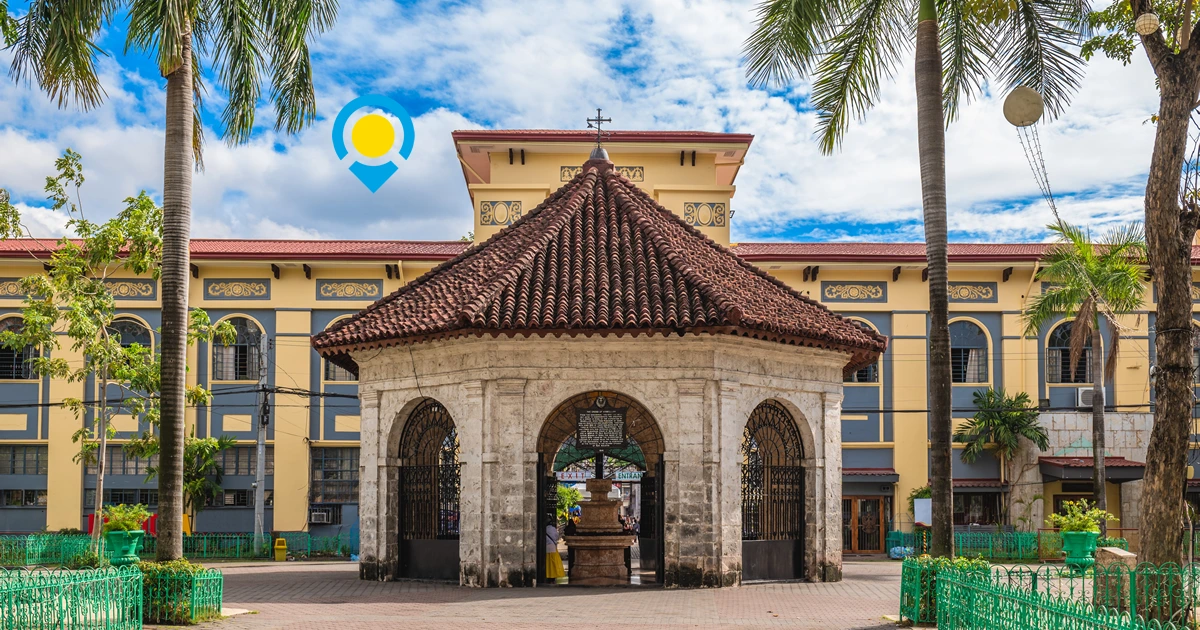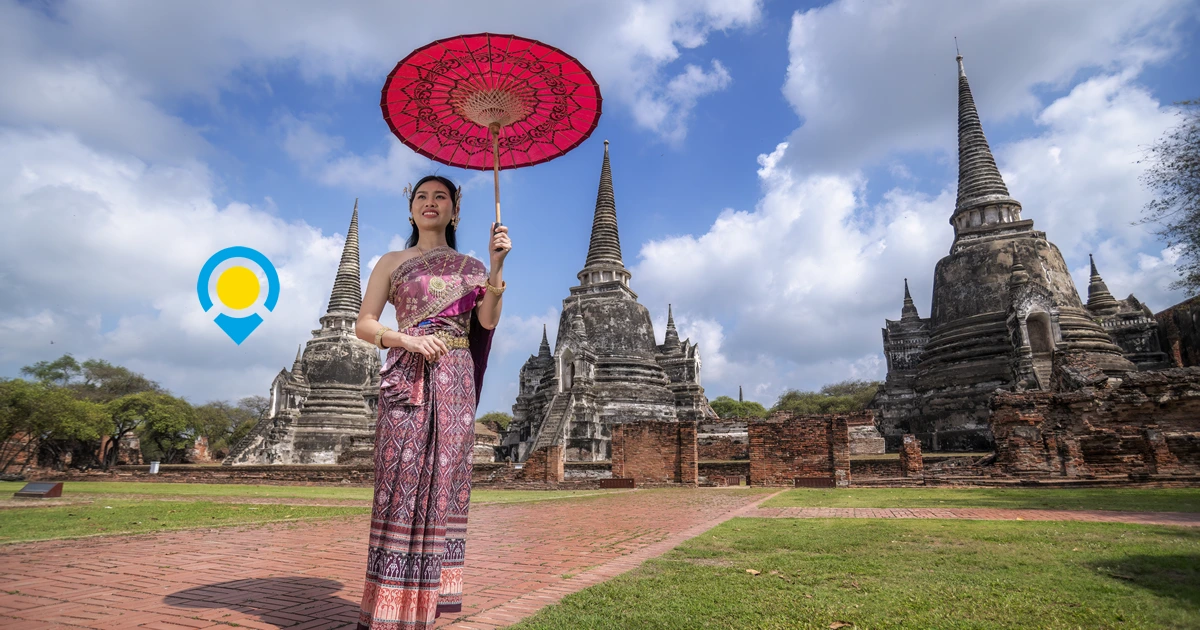
Cebu, often referred to as the “Queen City of the South,” is a province in the Philippines located in the Central Visayas region. Historically, it holds significant importance as it was the site of the first Spanish settlement and the arrival point of Ferdinand Magellan in 1521. Cebu’s geographical location comprises the main island of Cebu and numerous other smaller islands, making it a diverse tropical paradise with an array of breathtaking landscapes and experiences for visitors.
The province is well-known for its blend of modern urban life and the rich cultural heritage that it proudly preserves. Cebu City, the provincial capital, serves as a bustling urban center with shopping districts, restaurants, and vibrant nightlife. This city is also home to historical landmarks such as Magellan’s Cross and the Basilica Minore del Santo Niño, which draw visitors interested in the history of the Philippines and the influence of Spanish colonization.
Furthermore, Cebu offers stunning natural attractions that appeal to different types of travelers. From the white sandy beaches of Mactan and Malapascua to the remarkable snorkeling and diving spots around Moalboal and Malapascua Island, there are plenty of opportunities for water activities. Nature enthusiasts can explore the majestic Kawasan Falls and Osmeña Peak, which showcase the beauty of Cebu’s mountainous landscapes. The mix of adventure, culture, and urban experiences provides a unique travel opportunity in Cebu, making it a popular destination for both local and international tourists.
As a convergence of urban attractions, rich history, and stunning natural environments, Cebu continues to captivate visitors and makes it an essential stop for anyone exploring the Philippines.
1. Experience Historical Landmarks
Cebu, known as the “Queen City of the South,” is rich in history, and its historical landmarks offer visitors a glimpse into its colonial past. One of the most iconic sites is Magellan’s Cross, a Christian cross planted by Portuguese explorer Ferdinand Magellan in 1521. This wooden cross, housed in a small chapel in Cebu City, represents the arrival of Christianity in the Philippines and has become a significant symbol for many locals and tourists alike. Visiting this landmark not only offers a photographic opportunity but also helps one understand the early interactions between European colonizers and the native population.
An equally important historical site is Fort San Pedro, the oldest and smallest fort in the Philippines. Built in the 16th century as a military defense structure, the fort showcases the architectural features typical of Spanish colonial design. Today, it serves as a museum where visitors can learn about the fort’s role in protecting Cebu from invasions, as well as its subsequent transformation into a garrison and a place for prisoners. The fort’s strategic location provides picturesque views of the harbor, making it a worthwhile stop for both history enthusiasts and casual visitors.
Another must-visit landmark is the Basilica Minore del Santo Niño, which houses the oldest religious relic in the country-the Santo Niño de Cebu. This beautiful church, with its baroque architecture and stunning interiors, plays an essential role in Cebu’s culture and identity, particularly during religious festivals. The Basilica is also a significant pilgrimage site for both local and international visitors who wish to pay homage to the Santo Niño. Exploring these historical landmarks not only enriches one’s understanding of Cebu’s heritage but also highlights the enduring impact of its colonial past on present-day Filipino culture.
2. Visit Stunning Beaches
Cebu is renowned for its breathtaking beaches, offering a tropical paradise with crystal-clear waters and powdery white sands that appeal to beach lovers from around the globe. Among its most celebrated beaches are Bounty Beach on Malapascua Island and Panagsama Beach in Moalboal, each boasting unique charms that draw visitors year-round. Bounty Beach is particularly noted for its serene environment, ideal for swimming and sunbathing, while Panagsama Beach is famous for its vibrant marine life, making it a hotspot for water sports enthusiasts.
Bounty Beach, often described as the quintessential tropical getaway, spans over several kilometers and features calm, azure waters that invite leisurely swimming. The beach’s pristine beauty and tranquil ambiance create the perfect backdrop for relaxation, whether one prefers lounging under the sun or engaging in a good book’s company. The surrounding establishments offer a range of amenities, from beachside cafes to accommodations, ensuring that visitors can enjoy the stunning scenery without sacrificing comfort.
On the other hand, Panagsama Beach is the gateway to Moalboal’s rich underwater ecosystem. Snorkeling and diving are must-do activities here, with opportunities to observe colorful coral reefs and diverse marine species, including the famous sardine run. The beach itself is lined with local eateries and dive shops, serving as a hub for those eager to explore the vibrant underwater world. Moreover, water sports such as kayaking and paddleboarding are readily available, appealing to active travelers seeking adventure.
Cebu’s beaches offer an array of activities, making them suitable for all types of vacationers-from families looking to unwind to adrenaline seekers searching for their next thrill. The natural beauty of these coastal areas acts as a compelling invitation to experience the inviting allure and charm that Cebu’s stunning beaches provide.
3. Discover the Vibrant Marine Life
Cebu, a tropical paradise in the Philippines, is renowned for its breathtaking underwater attractions that offer a thrilling experience for both novice and seasoned divers alike. The marine environment is characterized by an extraordinary biodiversity, making it a prominent destination for those keen on exploring the ocean’s wonders. One of the standout locations for diving enthusiasts is Malapascua Island, which boasts vibrant coral reefs teeming with an astonishing variety of marine species. The crystal-clear waters provide an ideal setting to observe colorful fishes, sea turtles, and even the elusive thresher sharks, for which Malapascua is famous, during early morning dives.
Alongside Malapascua, the sardine run in Moalboal is another highlight that captivates snorkelers and divers. This extraordinary spectacle occurs when an immense school of sardines congregates near the shoreline, creating a mesmerizing underwater dance that attracts numerous predators. The sight of thousands of glimmering fish moving synchronously is truly unforgettable, offering divers a unique opportunity to interact with a thriving marine ecosystem. Such encounters not only showcase the natural beauty of Cebu’s waters but also highlight the importance of marine conservation.
For those who may not be as experienced, various dive shops in the region provide guided snorkeling trips and diving courses tailored to different skill levels. These services ensure that everyone can safely enjoy the vibrant marine life, regardless of their previous experience. Additionally, in the surrounding areas, one can discover diverse ecosystems ranging from seagrass beds to mangroves, which serve as essential habitats for various aquatic species. Overall, Cebu stands out as a premier destination for marine exploration, enticing visitors with its rich biodiversity and stunning underwater scenery.
4. Explore the Natural Wonders
Cebu, a province rich in biodiversity, is renowned for its breathtaking natural attractions that captivate the hearts of adventurers and nature enthusiasts alike. Among these treasures is Kawasan Falls, a stunning three-stage waterfall located near the town of Badian. Visitors are drawn to its turquoise waters that cascade over smooth rocks, creating a serene atmosphere ideal for swimming, relaxing, and canyoneering, an activity that has gained significant popularity. The lush surroundings and vibrant ecosystem of the falls offer a tranquil retreat from urban life, making it a must-visit destination for those who cherish nature.
Another iconic natural attraction is Osmeña Peak, the highest point on Cebu Island. Situated in Dalaguete, this peak is a popular hiking destination offering panoramic views of the surrounding landscape, particularly the nearby islands and neighboring peaks. The trek to the summit is relatively accessible, allowing visitors of varying fitness levels to experience the thrill of reaching the top. The verdant hills and diverse flora encountered along the trail add to the allure of Osmeña Peak, making it a rewarding experience for both casual walkers and serious trekkers.
Additionally, while not directly in Cebu, the stunning landscapes of the Chocolate Hills, located in the neighboring province of Bohol, are a captivating sight to behold and are a popular day trip from Cebu. With over 1,200 symmetrical hills that turn brown during the dry season, these geological formations are truly a natural wonder. The rich ecosystems surrounding these hills support a variety of wildlife, further enriching the experience for visitors.
Cebu’s natural wonders present various opportunities for outdoor activities, whether trekking, hiking, or simply enjoying the peaceful surroundings. The combination of picturesque landscapes, vibrant ecosystems, and serene environments makes exploring Cebu’s natural attractions an enriching experience that every nature lover should endeavor to enjoy.
5. Savor the Local Cuisine
Cebu, an island province in the Philippines, is not only renowned for its breathtaking landscapes and rich history but also for its delectable local cuisine. The flavors that grace the dining tables in Cebu reflect the diverse cultural heritage and the abundance of fresh ingredients available in this region. Among the culinary delights, lechon stands out as a crown jewel. This roasted pig is a celebration centerpiece, known for its crispy skin and tender, flavorful meat. Many locals and visitors alike consider it a must-try dish when indulging in Cebuano culinary traditions.
In addition to lechon, Cebu is famous for sinigang, a sour soup that showcases the island’s abundant local produce. Prepared with tamarind or other souring agents, this dish often features succulent pork or shrimp, simmered alongside fresh vegetables. The blend of savory and tart flavors creates a comforting and satisfying meal, perfect for reaffirming the home-cooked essence of Cebu’s food culture.
Seafood is another highlight of Cebuano cuisine, thanks to the province’s prime coastal location. Visitors can indulge in a variety of seafood dishes, from grilled fish to succulent shrimp and crabs. Many local restaurants feature fresh catches of the day, often served simply, allowing the natural flavors to shine through. The cultural significance of these dishes cannot be overstated, as they foster community and togetherness during shared meals, reflecting the warm hospitality unique to Cebu.
Dining in Cebu offers an immersive experience that goes beyond just tasting food; it connects visitors to the island’s cultural heritage and traditions. Each meal serves as a reminder of the history and craftsmanship that defines Cebuano cuisine. Exploring the local flavors is an essential aspect of any visit, inviting everyone to savor the tastes that make Cebu an unforgettable culinary destination.
6. Join Festivities and Events
Cebu is renowned for its vibrant and colorful festivities, which play a pivotal role in the local culture and heritage. One of the most celebrated events in the region is the Sinulog Festival, held every January in honor of the Santo Niño. This festival attracts both locals and tourists, transforming the streets of Cebu City into a lively spectacle filled with music, dance, and intricate costumes. The Sinulog Festival is not just a celebration; it is a profound expression of Filipino identity and devotion.
The festival’s highlight is the grand parade, featuring participants from various groups who perform the Sinulog dance, characterized by rhythmic movements and traditional music. The streets come alive with the sound of drums and the vibrant hues of performers’ costumes, symbolizing a rich cultural tradition that dates back centuries. Aside from the Sinulog, Cebu hosts numerous other events throughout the year, each with its own unique charm, such as the Kadaugan sa Mactan, which commemorates the Battle of Mactan. Each festival offers a blend of sights and sounds that showcase Cebu’s rich heritage and community spirit.
Visitors participating in these festivities are treated to an immersive cultural experience. They can witness traditional dances, sample native delicacies, and interact with locals, creating lasting memories that go beyond typical tourist attractions. The communal aspect of the celebrations fosters a sense of unity and belonging, which is truly remarkable. Engaging in Cebu’s festivals allows visitors to appreciate the island’s history and the imprints of its ancestors, offering insights into the collective values and traditions that continue to thrive today.
In conclusion, joining festivities such as the Sinulog Festival in Cebu is not merely an entertainment option; it is a gateway to understanding the local culture, traditions, and lifestyle that define this dynamic destination. The lively atmosphere, coupled with the warmth of the people, makes such experiences invaluable.
7. Engage with Local Culture and People
Cebu is renowned not only for its stunning landscapes and historical landmarks but also for the warmth and hospitality of its people. Engaging with the local culture offers visitors an enriched travel experience. From the bustling markets to the serene shores, the Cebuano community is characterized by friendliness and openness, making it easy for visitors to feel at home.
One of the best ways to engage with Cebuanos is by participating in community events and local festivals. Events such as the Sinulog Festival showcase the vibrant traditions of the island, where colorful street parades, traditional dances, and lively music come together in a spectacular display of cultural pride. Joining in on these celebrations not only allows visitors to appreciate Cebuano customs but also provides an opportunity to interact with locals, as they share stories and insights about their heritage.
Furthermore, visiting local markets, such as the Carbon Market in Cebu City, can be an immersive cultural experience. Here, tourists can observe daily life, sample traditional foods, and purchase locally made crafts and goods. By engaging with market vendors, travelers can learn about the history of various products and the significance they hold within the Cebuano culture.
Moreover, learning a few basic Cebuano phrases can significantly enhance the interaction with local residents. Most Cebuanos appreciate when visitors make an effort to communicate in their native language, which fosters goodwill and encourages more meaningful exchanges. Additionally, community initiatives, such as workshops or classes on traditional crafts, provide further chances to connect with Cebuanos while honing new skills.
The Cebuano ethos of hospitality guarantees that visitors are welcomed with open arms. Whether through cultural events, local markets, or personal interactions, experiencing the rich traditions and friendliness of the Cebuano people is a highlight of any visit to Cebu.
Plan Your Visit to Cebu
Planning a visit to Cebu requires a careful consideration of various factors to ensure a smooth and enjoyable experience. One key aspect to decide upon is the timing of your trip. The best time to visit Cebu typically falls between November and May, during the dry season when the weather is pleasant for outdoor activities and sightseeing. This period allows visitors to fully embrace the island’s natural beauty and cultural offerings.
Next, it’s essential to explore your transportation options. Cebu is accessible by both air and sea, with Mactan-Cebu International Airport (CEB) serving as the main gateway for international and domestic flights. Once in Cebu, travelers can utilize a range of transport modes such as taxis, ride-sharing services, jeepneys, and buses for local navigation. Opting for a rental car can also provide more flexibility, especially for those wanting to explore lesser-known areas.
Accommodation choices in Cebu are varied, catering to different budgets and preferences. From luxury resorts along Mactan Island to budget-friendly hostels in the city center, there are plenty of options available. It is advisable to book your accommodations in advance, especially during peak tourist season, to secure the best rates and locations.
As you prepare for your journey, consider packing essentials that cater to the tropical climate of Cebu. Lightweight clothing, swimwear, sunscreen, and comfortable footwear are a must. Additionally, don’t forget essentials like a reusable water bottle, a basic first-aid kit, and local currency for convenience during your travels. With careful planning and the right preparations, your visit to Cebu can become an unforgettable experience.




